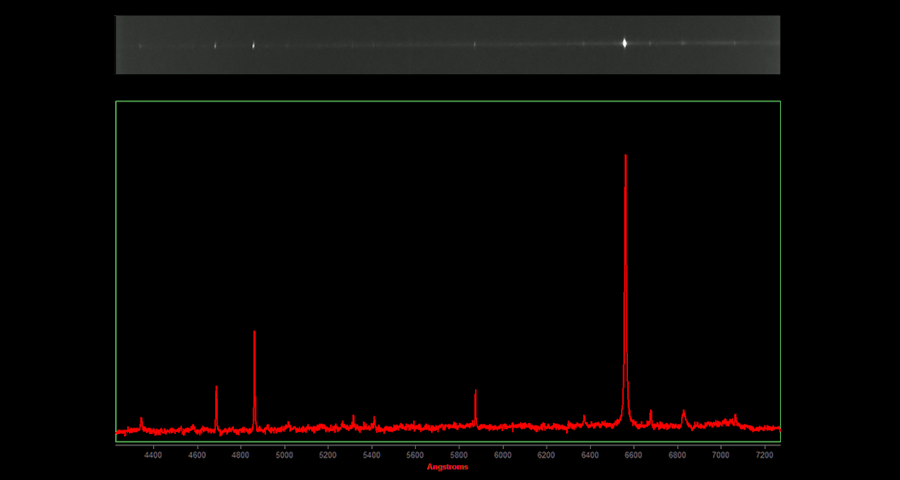Spectra of Planetary Nebulae
| Nebula | PK077-05.1 | RA (J2000) | 20 51 01.2 |
| Constellation | Cygnus | Dec | +35 34 54.1 |
| Size (arcsec) | stellar | Other names | PK 077-05.1 |
| Mag (V) | 12.2 | V1329 Cyg | |
| Surface Brightness (mag/arcsec2) | n/a |

HAG 24" RC, SBIG STF-8300M, LHires III, 300gr/mm, 5 x 300 sec, 2021-10-05@20:23
Symbiotic Star DSS2 image, 10 arcmin square

Symbiotic stars
A white dwarf or neutron star with a red giant companion will accrete material from the companion onto its surface
and if this interaction can be detected spectroscopically it is termed a Symbiotic Star. In the majority of such
systems known, nuclear reactions take place in the accreted material at the surface the white dwarf and the resulting
high temperature (100,000 K) allows ionization of a large fraction of the cool giant's wind producing an emission spectrum.
Raman Scattering
If a photon interacts with an atom or molecule it can be scattered either elastically (Rayleigh scattering) or
inelastically (Raman scattering).
Raman scattering is much less probable than Rayleigh scattering in which there is no energy transfer and thus
no change in photon wavelength.
In the Raman scattering process the photon is scattered inelastically and this process transfers energy from the photon
to the atom which changes the atom's vibrational quantum state and the photon loses that energy so becomes shifted
to a longer wavelength.
The Raman scattering process shown in this spectrum involves an O VI 1032A ultra-violet photon incident upon a hydrogen
atom in the ground state. The energetic photon is scattered inelastically transferring energy from the photon to the atom
and the photon loses energy to become an optically red 6825A photon.